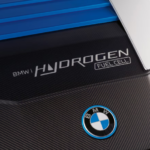Hybrid perovskites solar cells hold promise to be more efficient in converting light into energy than traditional solar cell materials. They are also easier to manufacture as they can be spin cast from solution and do not require high-vacuum chambers for synthesis.
Unlike their singular silicon or germanium counterparts, hybrid perovskites are made of both organic and inorganic molecules. The structure is built from inorganic lead and bromine molecules arranged in octahedral units that form cages around the organic methylammonium cations (positively charged ions) consisting of carbon, nitrogen and hydrogen.
The multi-institutional team of researchers from the Department of Energy’s Oak Ridge National Laboratory, Hunan University and the University of Nebraska–Lincoln used photoluminescence measurements, along with neutron and x-ray scattering, to study the relationship between the material’s microscopic structure and its optoelectronic properties.
By examining the material under varying degrees of temperature, the researchers were able to track atomic structural changes and establish how hydrogen bonding plays a key role in the material’s performance.
Neutron scattering has revealed, in real time, the fundamental mechanisms behind the conversion of sunlight into energy in hybrid perovskite materials. A better understanding of this behavior will enable manufacturers to design solar cells with increased efficiency.






